Is Your Dog Suffering From Corneal Ulcer? Here Are The BEST Home Remedies To Use 2024
The eyes are no doubt one of the most important organs in your dog’s body. However, health problems like corneal ulcer in dogs can lead to less than “eye-deal” conditions when it comes to your canine family member’s visual capacity.
And given the fact that dog corneal ulcers may even progress to blindness (particularly in the case of indolent corneal ulcers), providing your animal companion with the immediate and proper care and attention he needs during this health issue is a must.
Not doing so may hamper the healing process or worse lead to more serious issues like melting ulcers and deep ulcers that may already require antibiotic therapy or even surgical intervention like superficial keratectomy.
Make sure you follow along to find out the 8 best home remedies that will help you properly deal with corneal ulcer in dogs. Let’s start off our discussion by finding out what exactly corneal ulcer in dogs is…
What is Corneal Ulceration in Dogs?
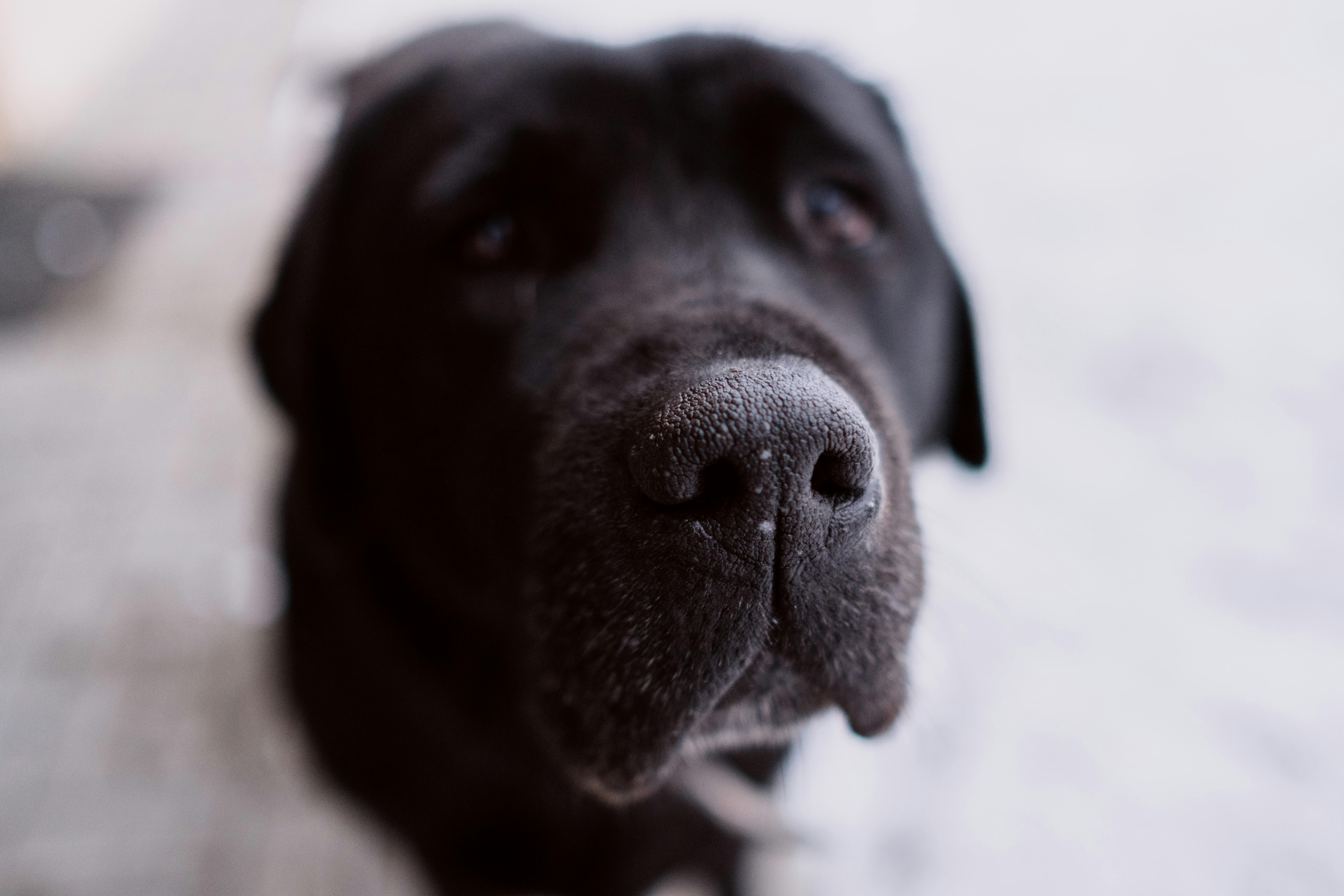
Dog corneal ulcer—also known as ulcerative keratitis—takes place when the thin layer of the corneal surface is scraped either singly or in a repeated manner. The surface layer may now be exposed to corneal perforation as well as foreign bodies and bacterial infection.
The lowdown on canine corneal ulcers
No matter how superficial corneal abrasions may be, these can eventually lead to damage of the corneal epithelium or corneal surface, which exposes the underlying stroma, blood vessels, and other deeper parts of the corneal tissue.
While an eye ulcer heals within a week in most dogs, the healing process may significantly take longer among those that have endocrine diseases like Cushing's disease and diabetes mellitus. This is the same case with dogs that have "indolent ulcers" or persistent corneal ulcers. Moreover, deeper ulcers heal a bit longer compared to shallow stromal ulcers.
But the thing is that regardless of the depth of an eye ulcer, proper and immediate medical management is required when it comes to corneal abrasion to promote healing. This can include the use of topical antibiotics, systemic pain medications, broad spectrum topical antibiotics, and antibiotic eye drops.
Apart from having a huge impact on your dog's corneal health, even a superficial ulcer caused by some slight corneal abrasion can set off serious complications. These can eventually lead to problems like corneal erosion, vision loss, persistent ocular discharge, and corneal edema if this problem is not dealt with the right way.
Some types of indolent corneal ulcers may even disrupt physiological functions causing decreased tear production. There are even those that look like superficial ulcers at first, but turn out to be complicated ulcers or severe ulcerative keratitis instead.
A few cases might require aggressive treatment using veterinary medicine and surgical intervention. This is often the case in the surgical removal of minute corneal foreign bodies that can cause perforation ulcers.
This health issue mainly affects your dog's corneal epithelium
Furthermore, three (3) layers of the cornea can be affected by the said scraping of the corneal stroma, which are the following:
These are the epithelium, which acts as the front cover of the cornea, the stroma which functions as the cornea’s primary supportive tissue, and the Descemet's membrane, which is a thick basement membrane that acts both as a protective barrier and a conduit for macromolecules and nutrients.
While all of our canine friends can be prone to corneal ulcers in dogs, it is more prevalent in brachycephalic (flat-faced) dog breeds like Shih Tzus, Bulldogs, Boxers, Pekingese, Boston Terriers, as well as Pugs. As for older dogs, Spontaneous Chronic Corneal Epithelial Defect (SCCED) is more prevalent.
Now that we’ve had an “eye-opening” look into what corneal ulcer in dogs is, let’s check out the causes that could set off this health issue…
How Does a Dog Corneal Ulcer Occur?
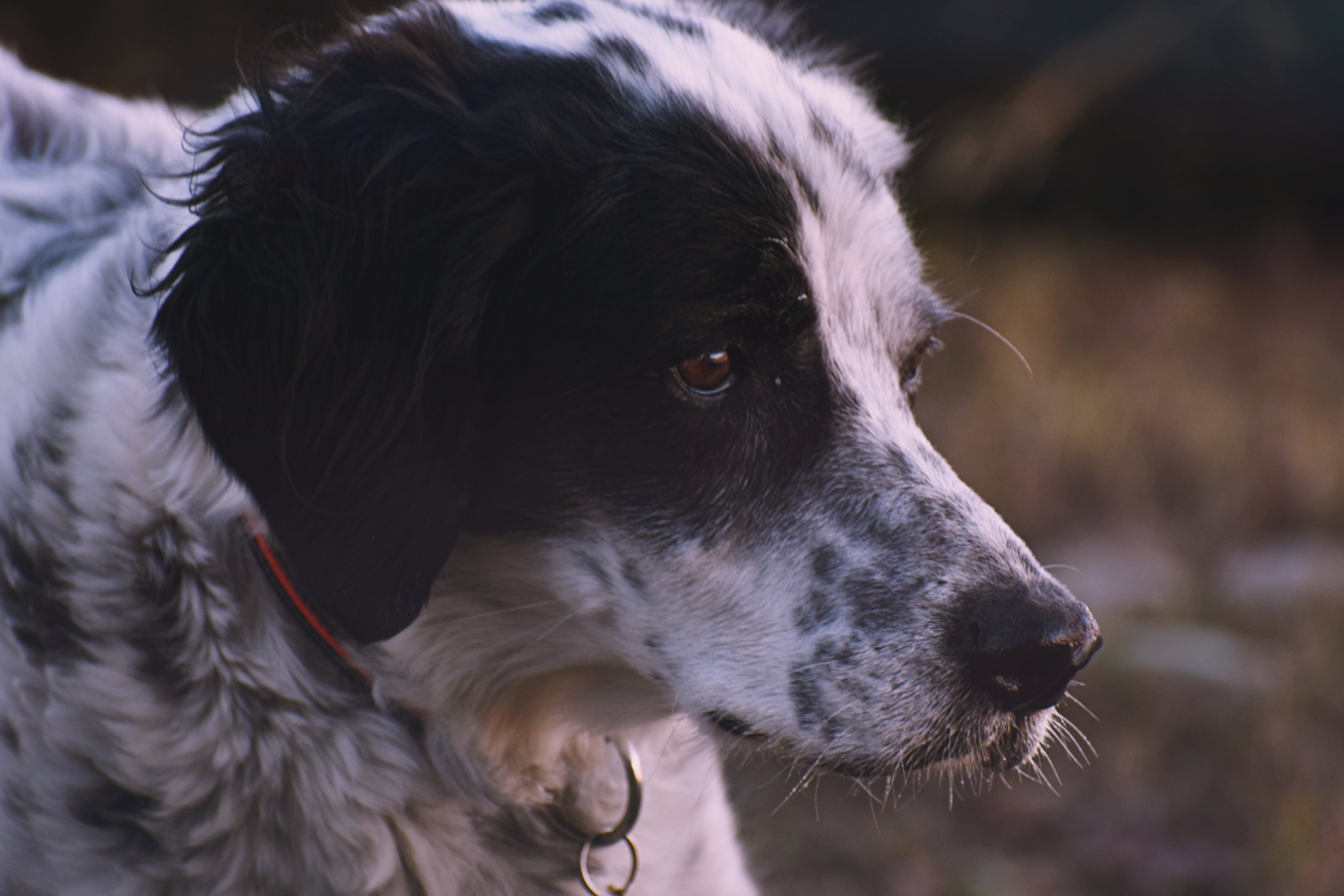
There are four (4) common causes of corneal ulcers in dogs, namely physical trauma, chemical irritation, infection, and specific illnesses. We will discuss each one in more detail below:
Physical trauma
Deemed as the most common cause of dog corneal ulcer, physical trauma can be anything that causes any bodily injury to your canine family member, which also brings about damage to the eyes, particularly the cornea.
Two (2) types of physical trauma can set off corneal ulcers in dogs.
The first one is blunt force trauma, which occurs when something hard or rigid forcibly comes in contact with the eyes, such as when your dog collides with a wooden chair or a wall, with his eyes getting most of the brunt of the impact.
On the other hand, the second one is penetrating trauma, which is characterized by the piercing of the skin, muscles, and tissues in and around the area of the eyes that results in open wounds. A common example of this is a scratch or nick in your dog’s eye by a foreign body.
Interestingly, superficial corneal ulcers can also be triggered by physical trauma to the eye by typically harmless objects that can be found in a dog’s environment like small pebbles, blades of grass, and loose, tiny pieces of tree bark.
Chemical irritation
This cause of dog corneal ulcer is attributed to harsh chemicals or substances that you may have in the vicinity of your home. When these chemicals or substances happen to get trapped inside your dog’s eyes, they tend to produce a burning effect that can cause lesions or abrasions to the cornea.
Examples of these chemicals or substances include nail polish remover, drywall dust, vinegar, glass polish, ammonia, bleach, oven cleaners, as well as some deep-cleaning detergents and shampoos. All of these can trigger spontaneous chronic corneal epithelial stromal ulcers.
This also serves as a reminder of why you should always go for dog-specific soaps and shampoos when shopping for your animal companion’s hygiene products.
Infections
Whether it’s caused by bacteria, viruses, or parasites, infections are usually characterized by inflammation and swelling. When these infections attack the area in and around a dog’s eyes, his cornea may also be affected, which can eventually lead to corneal ulcers.
Some key examples that you should take note of include ehrlichiosis or tick fever, Lyme disease, conjunctivitis or pink eye, canine influenza, as well as leptospirosis.
Specific illnesses
There are specific illnesses that can directly cause corneal ulcer in dogs or may increase your canine family member’s risk that he will be prone to this health problem. These illnesses are hypothyroidism, diabetes, keratoconjunctivitis sicca or “dye eye,” and epithelial dystrophy. These health issues may sometimes involve the administration of fluorescein stain to measure tear production and to help ulcers heal.
Interestingly, congenital abnormalities like abnormal eyelash growth and irregular corneal development may also contribute to the onset of corneal stroma and superficial ulcers in some dogs. Remember, a corneal ulcer diagnosed too late may set off issues with sufficient tear production and facial nerve paralysis—particularly in complicated ulcers.
Next up, I’ll walk you through the indicators of corneal ulcer in dogs that you should keep an eye on…
Signs that Your Dog's Corneal Tissue is Affected

The following are the symptoms of corneal ulcer in dogs. I’ve also arranged it from the slightest to the most severe so you can have a mental picture of how this health issue tends to progress:
-
Unexplained hiding (common in uncomplicated ulcers)
-
Lack of interest in play
-
Excessive whining and groaning
-
Constant pawing at the affected eye
-
Visible corneal defects like lesions
-
Excessive blinking
-
Rubbing of the face on hard surfaces like the floor
-
Redness in the distressed eye (possibly accompanied by some swelling)
-
Constant tearing either only in the affected eye or both eyes
-
Loss of appetite
-
Keeping the affected eye closed most of the time
-
Discharge coming from the affected eye (possibly bloody)
If you notice any of these symptoms of corneal ulcer in dogs, you must administer the immediate and proper care your canine family member needs to prevent aggravating this health issue. The administration of fluorescein stain and even diamond burr debridement may be needed in some cases.
And speaking of immediately and properly dealing with this problem, here are the best dog corneal ulcer home remedies that you can go for…
Treating Corneal Ulcer in Dogs at Home

Make a euphrasia "cooling" eye patch.
According to a study published in the National Center for Biotechnology Information (NCBI), extracts gathered from the Euphrasia officinalis plant “generally decreased pro-inflammatory cytokine levels,” which helps keep inflammation in check.
To use euphrasia in treating eye ulcers in dogs, boil the leaves, stems, and flowers of this herbaceous flowering in water for at least ten (10) minutes or until the liquid takes on a light brown color. Let the liquid cool down completely and divide it into small but sufficient portions.
Get a single portion of the cooled euphrasia tea and dip a clean piece of cloth in the liquid. Put the cloth gently on the troubled eye, administering the same as most conventional topical medications. Repeat this process for a few minutes and discard the used euphrasia tea. Make sure you use a fresh batch for the next application.
This application works best during the early stages of a dog stromal ulcer.
Let your dog load up on foods rich in astaxanthin.
Another study in NCBI reports that astaxanthin has been seen to produce “significant improvement in the outcomes of various ocular diseases including diabetic retinopathy, age-related macular degeneration, glaucoma, and cataract.”
The proponents of the study even emphasize that astaxanthin has a “potential role of astaxanthin in promoting eye health.”
To make use of the benefits of astaxanthin in treating canine corneal ulceration, make sure you include dog-safe foods loaded with this antioxidant and keto-carotenoid in your regular meals. Prime examples of these include red trout and salmon.
However, it is crucial to keep in mind that you should only serve these fatty fish cooked and without any added seasoning or flavoring.
Besides making sure to remove any bones that can be potential choking hazards, you should never give red trout and salmon raw to your canine family member, or else he will be exposed to toxins and contaminants that can lead to illnesses like Salmon Poisoning Disease (SPD).
Make a DIY green tea eye compress.
BMC reveals that green tea contains a rich amount of health-promoting polyphenols that have been observed to not just have anti-inflammatory properties, but also “antibacterial, antiangiogenic, antioxidative, antiviral, neuroprotective, and cholesterol-lowering effects.”
This makes green tea an all-around home remedy to support your canine family member when eye ulcers in dogs strike.
To use green tea in dealing with corneal ulceration in dogs, gently place used—and completely cool—green tea bags on the distressed eye and keep it in place for a few minutes. This works best when your animal companion is in a lying position or when he is resting.
A warm compress never fails.
Another study published in the NCBI shows that warm compresses have a beneficial effect on eye health issues like blepharitis or the inflammation of the eyelids. Since inflammations are one of the key factors that trigger the onset of a dog's eye ulcer, using one could help prevent it from becoming worse.
To use a warm compress in treating corneal ulceration in dogs, submerge a clean piece of cloth or small towel in warm water and wring the excess. Gently put the warm compress on the diseased eye and keep it in place for at least five (5) minutes.
Make lutein a regular in his diet.
The NCBI highlights that several studies show regular intake of high amounts of the antioxidant lutein “has beneficial effects on eye diseases, preventing or even improving both age-related macular degeneration (AMD) and cataracts.”
Lutein is abundant in a number of dog-safe foods such as curly parsley, bell peppers, lettuce, and eggs. A couple of teaspoons will already suffice. To make use of the benefits of lutein in treating canine eye ulcers, integrate foods that are rich in this antioxidant into your canine family member’s regular diet.
Wash the bacteria and contaminants away with a saline solution
According to Medical News Today, saline solution is one of the simplest yet rather potent antibacterial options that you can use to get rid of contaminants. Besides helping remove debris and dead skin cells, this no-fuss home remedy can also do away with excess mucus, which usually gets in the picture during inflammations.
To make your very own saline solution in treating dog corneal ulcers, simply combine a cup of water that’s pre-boiled for at least twenty (20) minutes and a teaspoon of rock salt or some other form of non-iodized salt.
However, it is not recommended to use sea salt for this application since its added minerals can cause additional irritation to the troubled eye. Other options that you can go for are kosher salt and pickling salt.
Stir the mixture thoroughly until all of the salt crystals have dissolved. Let it cool completely before applying a small amount to your dog’s distressed eye as irrigation. You can also use an eye dropper for this application.
Honey will help give your pet pain relief from a dog's eye ulcer.
As reported by the NCBI, honey does not just have an antibacterial effect, but also helps “prevent corneal scarring caused by infection,” particularly in cases of keratitis (corneal inflammation) and blepharitis (inflammation of the eyelid margins), which makes it a good fit as a canine eye ulcer home remedy.
However, it’s crucial to emphasize that it is not recommended to put honey directly into the eye for this application. To use honey in treating eye ulcers in dogs, boil a cup of water with three (3) teaspoons of this sweet substance. Stir gently until the mixture achieves a slightly thick consistency.
Let the mixture cool down completely. You can now apply it to your dog’s diseased eye as irrigation or as a natural eyewash.
Castor oil helps boost eye surface strength.
The National Library of Medicine shares that castor oil contains ricinoleic acid, which helps facilitate “increased tear film lipid layer thickness” and stability when applied topically to the eyes. Studies also show that castor oil has “strong anti-microbial, anti-inflammatory, analgesic, antioxidant, wound healing and vaso-constrictive properties.”
To use castor oil in treating canine corneal ulceration, apply the same to your canine family member’s troubled eye using an eyedropper. Make sure you only put a single drop each time.
And now here’s a natural and high-quality product you should check out when it comes to eye ulcers in dogs…
A Premium Natural Product You Should Consider
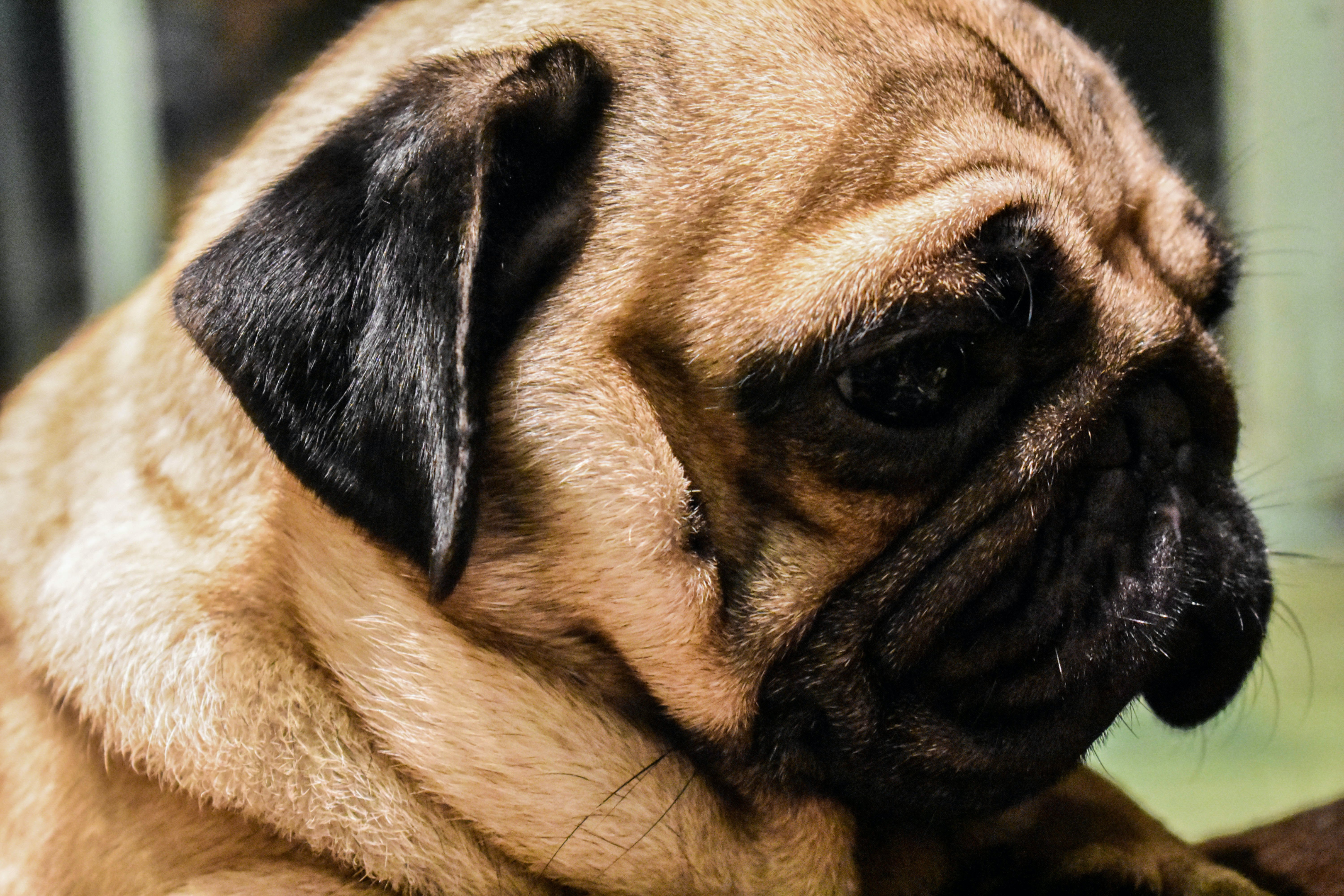
Zumalka's CORNEAL CARE helps promote your canine family member’s cornea and overall eye health. It is also designed to stave off the formation of pus during inflammations, as well as alleviate excessive sensitivity of the eyes.
Apart from being made from natural and high-quality ingredients, CORNEAL CARE also uses a gentle holistic approach to ensure your dog’s safety and well-being during administration.
Now let’s talk about how to clean your dog’s distressed eye when he is suffering from corneal ulcerations…
Properly Cleaning the Eye During Corneal Ulcer in Dogs
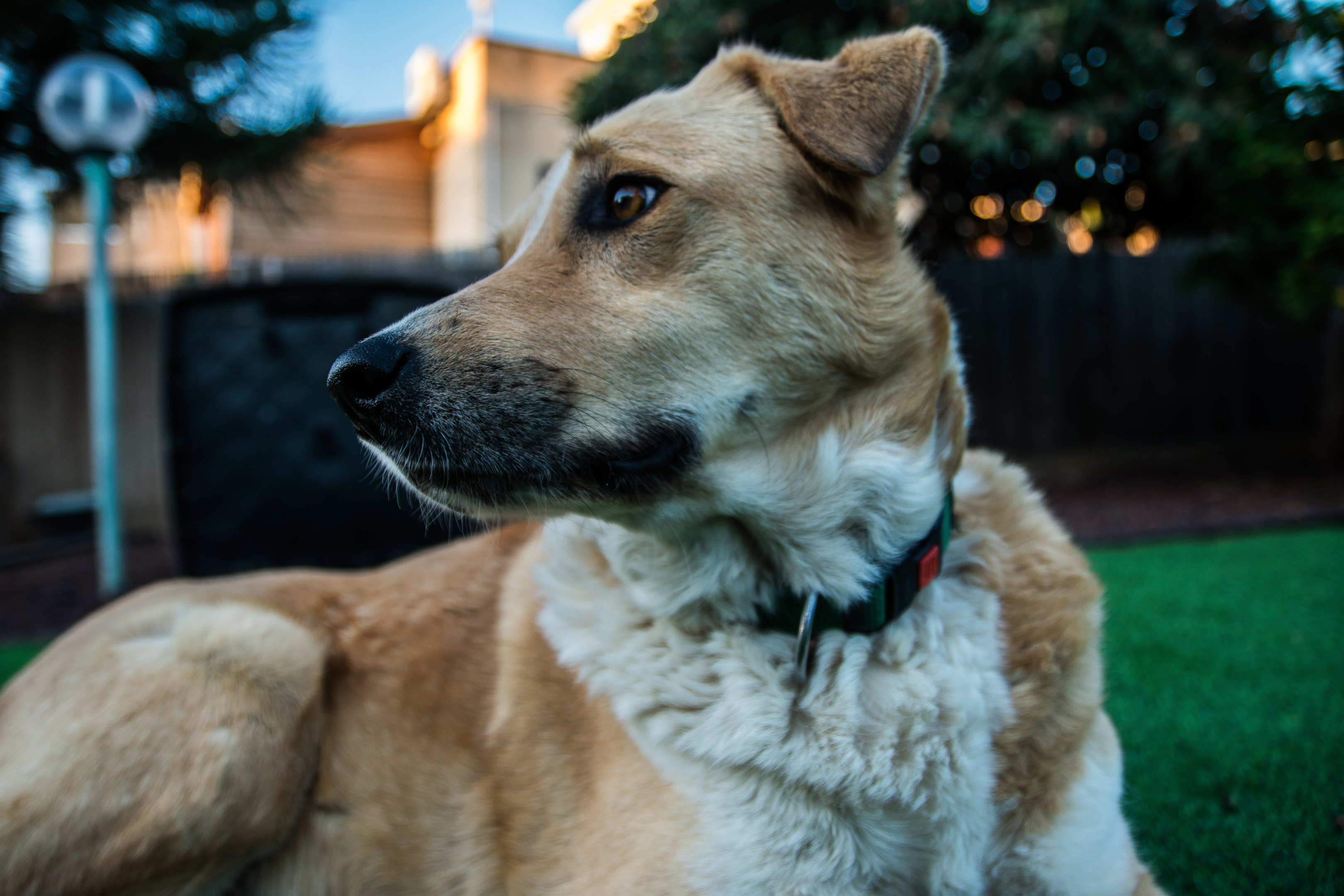
Unlike what a lot of people mistakenly believe, cleaning a dog’s troubled eye during a corneal ulcer isn’t that tricky. If you’re looking to do just that, here are the things you should keep in mind:
Prepare some saline solution, two (2) clean pieces of cloth, two (2) deep containers or bowls, as well as an eyedropper or a new syringe.
Place your dog in a comfortable position where you can easily access the distressed eye. Make sure both of your arms have ample space to move around. Remember not to take hold of his head too tight so he won’t wiggle as much.
Divide the saline solution into two (2) portions and pour a single portion into each container or bowl. Dip a piece of cloth into the saline solution and gently wipe the areas around the eyes to get rid of any unwanted crust, dirt, or fur.
When you’ve finished, use the eyedropper or syringe to irrigate the surface of the diseased eye. Take care to avoid touching the eye itself during this process.
Using a fresh piece of cloth, gently wipe the excess saline solution from the areas around the troubled eye. And then give your dog a treat for being so nice and cooperative.
Next, let’s touch on a question that I’ve been asked by a lot of pet parents and animal lovers already regarding canine corneal ulcer…
Can Corneal Ulcer Affect Eyesight?
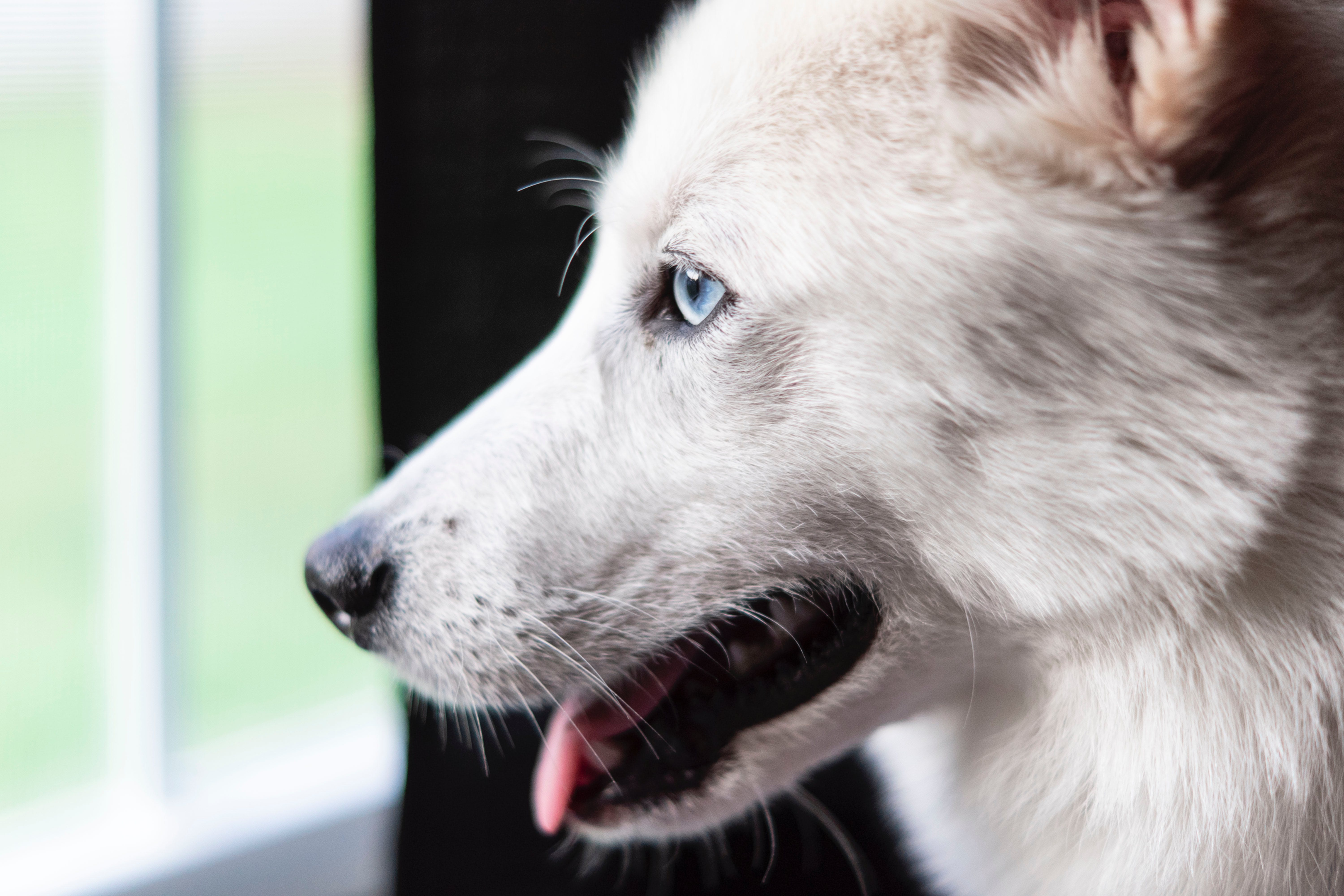
The short answer is yes.
You can think of corneal ulcer in dogs as a kind of lesion or wound that can progress into a more serious injury if not given immediate and proper care and attention. The longer this health problem lingers, the more severe its adverse effects will be.
Besides causing irregular scarring in the cornea, which can lead to foggy and blurry vision, a canine corneal ulcer may even result in blindness in the long run if neglected or not appropriately dealt with.
A common conventional remedy is topical atropine and topical antibiotics to promote healing of the surface layer of the cornea as well as the affected blood vessels. A case of indolent corneal ulcer may even require diamond burr debridement if left neglected for too long.
Now let’s walk through some of the frequently asked questions about corneal ulcer in dogs…
FAQs
A lot of pet parents and animal lovers have been asking me the following questions on the subject of corneal ulcer in dogs lately. Make sure to go over them so you will come up with the right support strategy should your canine family member be afflicted with this health issue:
Why does my dog keep getting corneal ulcers?
If your canine family member keeps getting corneal ulcers despite the absence of physical trauma, chances are he has an underlying health condition that causes the same.
Besides the possibility that he is going through a bacterial, viral, or parasitic infection, your dog could also be suffering from hypothyroidism, diabetes, keratoconjunctivitis sicca or “dye eye,” and epithelial dystrophy.
Can you bathe a dog with an eye ulcer?
Contrary to what a lot of people mistakenly think, you can give a dog with a corneal ulcer a bath.
However, it is crucial to keep in mind not to use any harsh shampoos and soaps that could worsen the condition. Some products, notwithstanding how gentle they claim to be, can give your dog a prolonged stinging sensation afterward.
The best approach to do this is by using saline solution to clean the areas in and around the affected area, and water for the rest of his body.
Will a dog's eye heal itself when he is afflicted with a corneal ulcer?
The short answer is it depends.
Some corneal scrapings or abrasions are so shallow that a dog’s body can easily manage to heal them itself. A good example of this one is when a speck of dust or similar fine foreign matter gets into your canine family member’s eye.
However, deep corneal scrapings or abrasions that become ulcers already require immediate and proper care and attention to heal, such as in the case of nicks and cuts as well as inflammations and infections.
How long does it take for a corneal ulcer to heal in a dog?
Corneal ulcers in dogs that only affect the outermost layer of the cornea can heal in about seven (7) days if given immediate and proper care and attention.
On the other hand, in the case of a deeper and more severe dog corneal ulcer, the time it will take to heal will vary.
This is the reason why you should consider having a high-quality and natural product like CORNEAL CARE in your home dog care kit to be always prepared for this health problem.


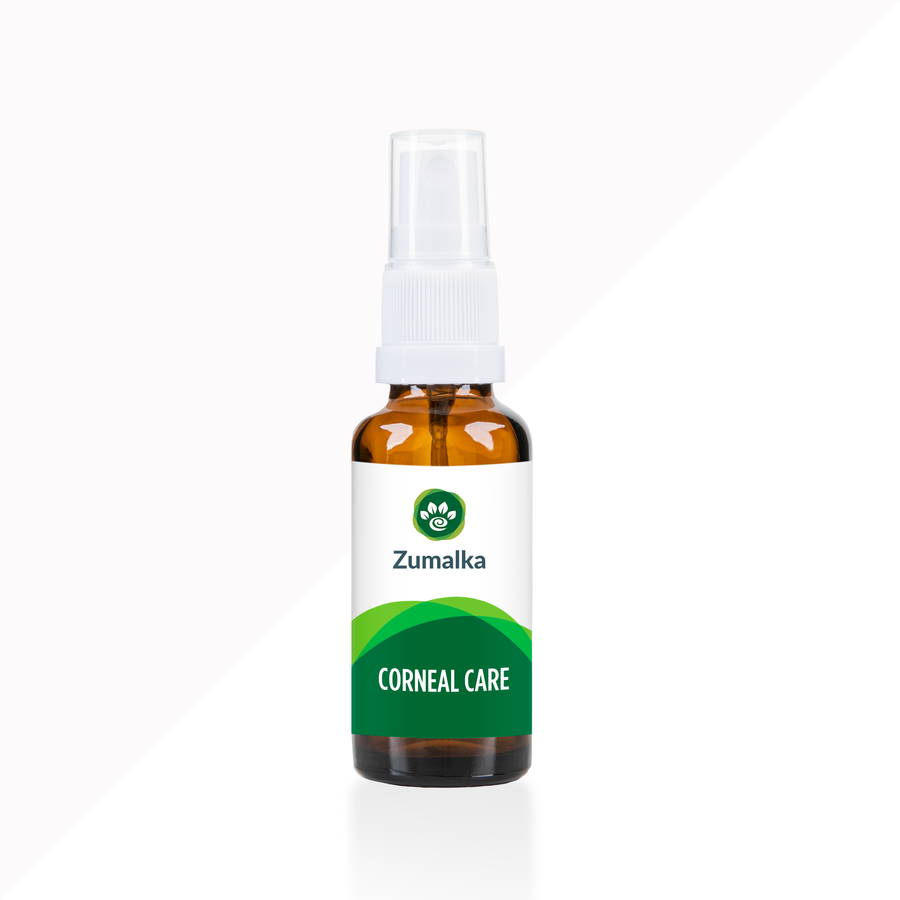
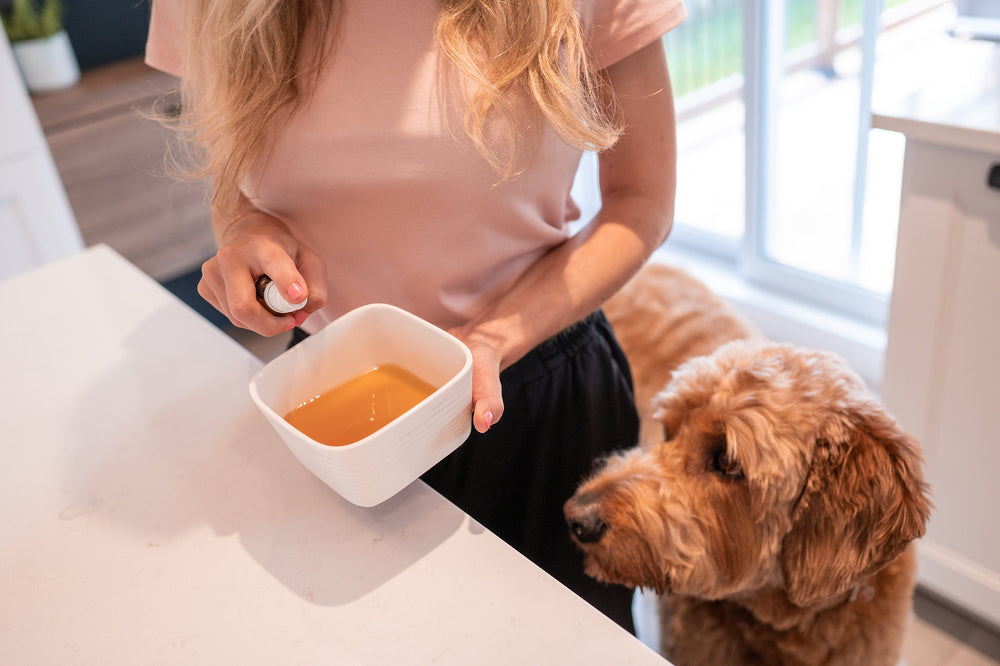


Leave a comment